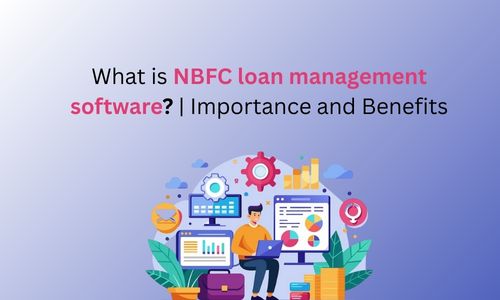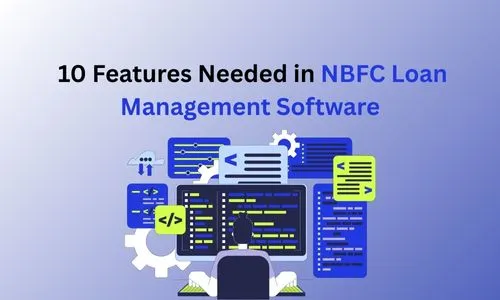What is NBFC loan management Software?| Importance and Benefits

Top 10 Features That Are Needed in NBFC Loan Management Software
September 4, 2025
Nano Banana Google Gemini AI Image Creation| How to Create Your Own 3D Figurine
September 12, 2025NBFC loan management software represents a vital tool for non-banking financial companies aiming to streamline their lending operations. This specialized system handles everything from loan origination to repayment tracking, ensuring efficiency in a competitive economic landscape. Businesses in the finance sector increasingly rely on such technology to manage risks and enhance customer experiences.
Financial institutions outside traditional banking often face unique challenges in handling loans. They deal with diverse client needs, regulatory demands, and operational complexities. Adopting advanced solutions helps them stay ahead. This article explores the core aspects of these systems, highlighting why they matter and the advantages they bring.
Defining NBFC Loan Management Software
Non-banking financial companies, or NBFCs, provide credit services without holding a full banking license. They focus on loans for vehicles, homes, businesses, and personal needs. Loan management software tailored for NBFCs automates and organizes the entire lending lifecycle.
At its heart, this software integrates various functions into a single platform. It starts with applicant screening and moves through approval, disbursement, and collection phases. Users access real-time data, which reduces manual errors and speeds up processes.
Key Components of the System
Modern systems include modules for customer relationship management, where profiles are built and maintained. Risk assessment tools evaluate borrower creditworthiness using algorithms and data analytics. Compliance features ensure adherence to legal standards, preventing penalties.
Document management is another essential part. It stores and retrieves files securely, often with digital signatures for faster processing. Reporting dashboards offer insights into portfolio performance, helping managers make informed decisions.
How It Differs from Traditional Methods
Unlike manual spreadsheets or basic accounting tools, this software uses cloud-based or on-premise setups for scalability. It incorporates artificial intelligence for predictive analysis, forecasting defaults or trends. Integration with external systems, like credit bureaus, adds layers of accuracy.
For smaller NBFCs, entry-level versions provide affordability, while larger ones opt for customizable enterprise solutions. The shift from paper-based to digital workflows marks a significant evolution in efficiency.
The Growing Importance of Loan Management Software for NBFCs
As the financial sector expands, NBFCs handle higher volumes of loans. Without proper tools, managing this growth becomes chaotic. Software solutions address these pressures by automating routine tasks and providing oversight.
Regulatory environments demand transparency and quick reporting. Governments impose strict guidelines on interest rates, data privacy, and anti-money laundering. Automated systems track compliance effortlessly, reducing audit risks.
Adapting to Market Demands
Customers expect fast approvals and personalized services today. Delays can lead to lost business. Software enables quick decision-making through instant data access and automated workflows. It also supports mobile apps for borrowers to check statuses or make payments.
Economic fluctuations, like recessions or booms, affect loan portfolios. Predictive tools within the software help forecast impacts, allowing proactive adjustments. This resilience is crucial for long-term stability.
Enhancing Operational Efficiency
Manual processes consume time and resources. Employees spend hours on data entry or follow-ups. Automation frees them for strategic roles, such as client advisory or business development. Cost savings from reduced paperwork and errors add up significantly.
In competitive markets, NBFCs must differentiate themselves. Offering seamless experiences through software builds trust and loyalty. Positive word-of-mouth and repeat business follow naturally.
Major Benefits of Implementing NBFC Loan Management Software
Adopting this technology yields numerous advantages. From cost reductions to improved security, the impacts touch every aspect of operations.
Streamlined Loan Processing
One primary benefit lies in faster loan cycles. Applications get processed in minutes rather than days. Automated verification checks identities and financials swiftly. This speed satisfies customers and boosts approval rates.
Disbursement becomes instantaneous with electronic fund transfers. Repayment schedules are set automatically, with reminders sent via email or SMS. Fewer defaults occur due to timely nudges.
Improved Risk Management
Software employs sophisticated models to assess risks. It analyzes credit scores, income stability, and market trends. Early warning systems flag potential issues, allowing interventions like restructuring loans.
Portfolio diversification is easier with data-driven insights. Managers balance high-risk and low-risk assets, minimizing overall exposure. This approach safeguards against economic downturns.
Enhanced Customer Satisfaction
Borrowers appreciate user-friendly interfaces. Online portals let them apply, upload documents, and track progress from home. Personalized loan offers based on past behaviors increase acceptance rates.
Support features, like chatbots or helpdesks integrated into the system, resolve queries quickly. Transparent communication builds stronger relationships, encouraging referrals.
Cost-Effective Operations
Reducing manual labor cuts overheads. Fewer staff are needed for administrative tasks, lowering payroll expenses. Digital storage eliminates printing and filing costs.
Error minimization prevents financial losses. Automated calculations avoid miscalculations in interest or fees. Over time, these savings improve profitability margins.
Robust Data Security and Compliance
Financial data is sensitive, making security paramount. Software includes encryption, firewalls, and access controls. Regular updates patch vulnerabilities, protecting against cyber threats.
Compliance modules generate reports for regulators automatically. They track changes in laws, ensuring ongoing adherence. This peace of mind lets leaders focus on growth.
Scalability for Business Expansion
As NBFCs grow, their needs evolve. Cloud-based software scales effortlessly, adding users or features without major investments. It supports multiple branches or international operations seamlessly.
Integration with other tools, like accounting or CRM systems, creates a unified ecosystem. This flexibility future-proofs the business against changing demands.
Better Decision-Making with Analytics
Advanced analytics provide deep insights. Dashboards visualize key metrics, such as delinquency rates or revenue trends. Managers identify patterns and optimize strategies accordingly.
Forecasting tools predict future performance, aiding budget planning. Data-backed decisions replace guesswork, leading to higher success rates.
Challenges and Considerations in Adoption
While benefits abound, implementation isn’t without hurdles. Initial costs for setup and training can be substantial. Choosing the right vendor requires thorough evaluation.
Integration with legacy systems might pose technical issues. Staff resistance to change needs addressing through proper training. Ongoing maintenance ensures the software remains effective.
Despite these, the long-term gains outweigh the efforts. Starting small, with pilot programs, eases the transition.
Future Trends in NBFC Loan Management Software
Looking ahead, innovations will shape this field. Artificial intelligence and machine learning will enhance predictive capabilities. Blockchain could add transparency to transactions.
Mobile-first designs will dominate, catering to on-the-go users. Integration with fintech ecosystems will open new possibilities, like embedded finance.
Sustainability features might emerge, tracking eco-friendly lending. As technology advances, NBFCs equipped with cutting-edge software will lead the pack.


